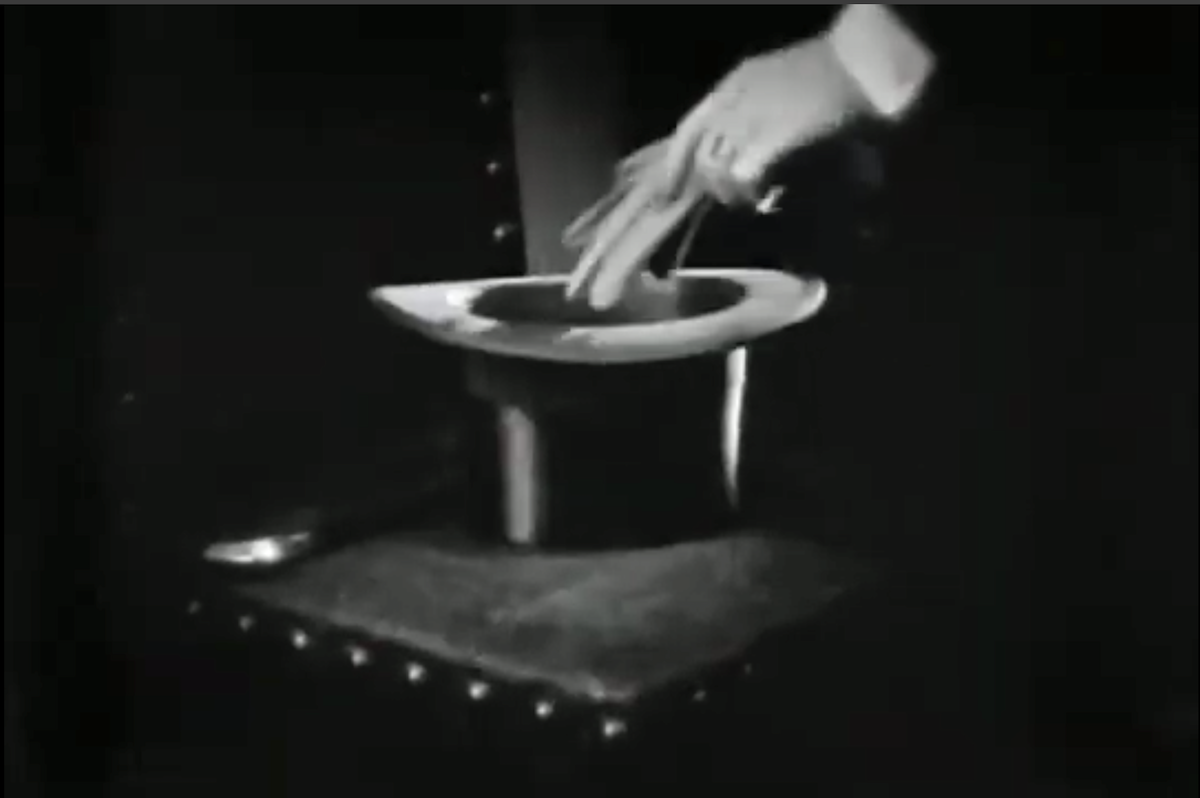The visual shorthand of Silent Film also functions with physical objects. Often, by connecting them with other objects or between shots of people, an impression is intended to be made on we viewers, rather than spelling the point out blatantly.
The Soviet filmmakers had a field day with this.
The iconography of the items or what they represent is all that we’re given, and it’s all we need. Makers of Silent Film had been using this in different ways since the ‘teens, but the technique develops to an art form of suggestion in the early or mid-‘twenties.
In He Who Gets Slapped (1924), directed by Victor Sjöstrom, there is a moment toward the end, at a point where a wealthy man and the woman whose relationship has devastated Lon Chaney’s character in the beginning of the picture takes a turn. As the scene begins are shown:
- a close medium shot of the woman sitting in a chair – she sees someone
- a close-up of a chair, on which we see a top hat and gloves and a cane – the man’s hand enters the shot and picks up the gloves, then the hat, then the cane
- the woman watching this happen, distraught
- a medium wide shot of the doorway out of the room – the man goes to leave, briefly looks back, and exits, pulling the door shut
- the woman, taking this in – a few beats, then she looks down
- insert shot of a check made out to her for thousands of francs; the digit followed by zeroes is covered by her thumbs.
There isn’t a title in the sequence. We do not see the man enter the room, nor what happened between the two before the scene begins. The man and the woman do not speak to one another. The actions I’ve described merely happen.
And yet, we know exactly what’s occurred. It may not be clear from my description, if you don’t know the film, but from the story context, and what the objects mean in societal conventions (of the time, anyway), and the suggestions made by what we’re shown it’s clear that the relationship is over. Even viewed now during a time when making sure you left a place with your hat has been extinct for decades, but being shown only suggestions of actions and of reactions it is left to us to not only deduce what each of the shots symbolize but also to fuse this all together into a dramatic moment.
We are told or shown very little…and we understand everything.
Here is the scene from He Who Gets Slapped (1924) refererenced above:
The first post in this series is here.
The previous post (#35) to this one is here.
The next one (#37) is here.

